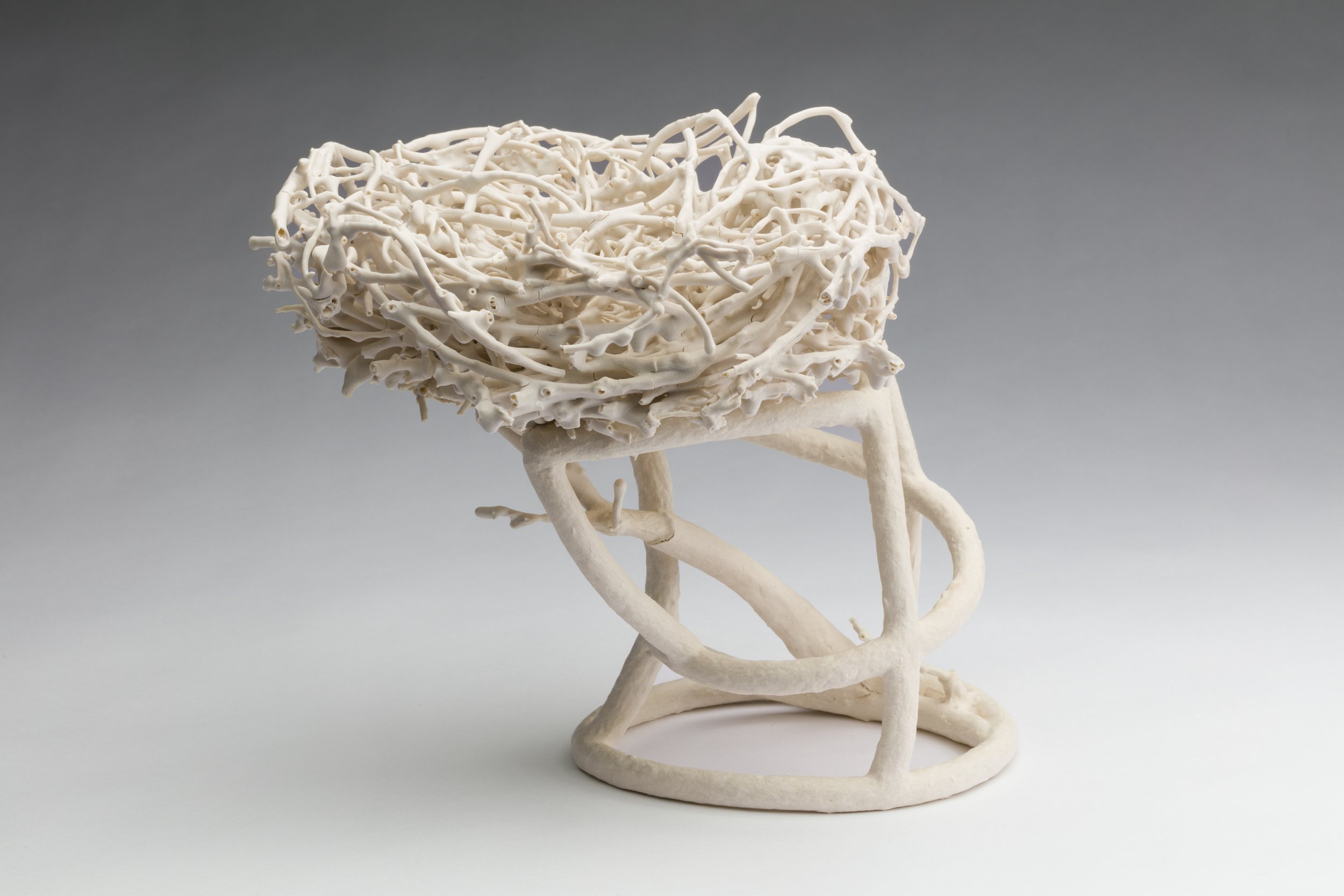Tina Suszynski
Tina Suszynski was born and raised on a barrier island in Southern New Jersey, where she became a student of a local artist and art educator at an early age. This relationship lasted through elementary and high school, allowing her to experiment with media not available in typical public school art classes. She attended Dickinson College, where she earned a B.A. in International Studies and spent her junior year studying in Paris, France. Tina went on to earn a law degree from Loyola University of Chicago and practiced law for several years before deciding to devote more time to family and art. She now lives in the Denver metropolitan area, where she is a full-time artist. Tina has been a resident artist at Valor Arts+Media in Colorado, AIR Vallauris in France, the Red Lodge Clay Center in Montana, and Curamilla, Chile. She has been a member of the Artnauts art collective since 2019.
Artist Statement
I use plants, clay, and extreme heat to portray destruction in search of beauty, as well as the beauty of destruction. The results speak to my fascination with the dominion nature wields over our planet and the chaos that ensues as we try to tame it.
What is your first memory creating?
I remember when I was very young, maybe three or four, sitting on the front stoop of a salon in Philadelphia while my mom was inside getting her hair done. She had given me some blank paper and crayons, patted me on the head, and asked me to sit quietly until she came out. I remember feeling quite happy to be sitting there in the sunshine making pictures.
What is your relationship to your medium? What draws you to it?
Working in clay is a transformative experience for me, like sophisticated child’s play in an adult sandbox or mud puddle. When I sit down to work in my studio, I lose myself in the tactile and performative nature of the medium. Water evaporates, and forms emerge. It’s all very natural and unforced.
What is the main thing you hope your audience takes away from your art?
Using texture and detail to draw people in, I hope that the viewer will recognize the familiar plants I choose and think about the natural environment they inhabit. Maybe they will leave the experience with a renewed awareness of what surrounds us all—whether in a busy city, a quiet suburb, or more remote parts of the world. I love to see the surprise on people’s faces when they realize that all the work is derived from dipping plant matter in porcelain slip. I hope the fragile nature of my finished pieces will serve as a reminder that we live in a delicate world and need to consider how we handle even the most mundane aspects of our lives.
Tell us about a challenge you overcame last year.
Last year, as in many years before, I struggled with what is happening to the environment and my part in it. Is my work relevant? Is it furthering the damage? I still grapple with these questions. Each year, I strive to improve the sustainability of my practice. I use plants that many people would call weeds (my garden is xeric, and I collect from untended public areas), utilizing every part of the plant in the final work. I don’t throw anything away; if I don’t like a piece, I rework it until I do. I pack my electric kiln to the brim and fire as infrequently as possible. I hope that someday, my studio will be solar-powered.
What is your main goal or resolution this year in terms of your art practice?
I love to work large and create drama in my art practice. This year, I will explore new ways to stretch my relationship with porcelain and expand the size and complexity of my artwork while remaining mindful of my carbon footprint.













